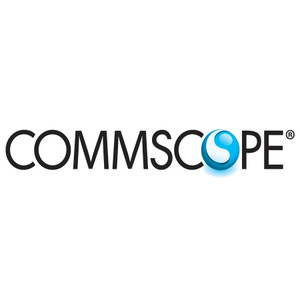CommScope 850/1990 MHz Dual band TMA/Twin Diplexer
$2,318.76
- Brand
- CommScope
- SKU:
- E15Z01P13
- Weight:
- 25.70 LBS
- Shipping:
- Calculated at Checkout
Twin Diplexed Dual Band Tower Mounted Amplifier
Twin 850/1900 MHz TMA with AISG
Designed for the highest reliability even in the most demanding installation environments.
The tower mounted amplifiers from Andrew Solutions help optimize network performance and represent the ideal solution for coverage and capacity enhancement.
By improving uplink performance, Andrew Solutions Tower Mounted Amplifiers (TMAs) ensure optimum coverage of fringe areas, weak spots, and indoor locations. The unit is easy to install in any wireless system and provides:
Improved sensitivity—reducing dropped calls and failed connection attempts. Enhanced signal quality—improving voice clarity and data transmission speed. Lower handset output—extending talk time and reducing interference in GSM/EDGE, UMTS, and CDMA systems.
The self-contained body is engineered to ensure the highest reliability in severe environments while featuring a very compact size and attractive appearance.
The 850/1900 twin diplexed dual band TMA includes pole mounting hardware. It can be wall mounted with user-provided fasteners.
Improved sensitivity—reducing dropped calls and failed connection attempts. Enhanced signal quality—improving voice clarity and data transmission speed. Lower handset output—extending talk time and reducing interference in GSM/EDGE, UMTS, and CDMA systems.
The self-contained body is engineered to ensure the highest reliability in severe environments while featuring a very compact size and attractive appearance.
The 850/1900 twin diplexed dual band TMA includes pole mounting hardware. It can be wall mounted with user-provided fasteners.
- Rejection of SMR/trunking interference
- Failsafe low noise amplifier (LNA) bypass
- Dual protocol AISG 1.1/2.0 support
- RET antenna port
- Conventional PDU compatible
- Legacy dual band TMA compatible
- Field upgradeable firmware
| Electrical Specifications Rx (Uplink) | |
| Bandwidth | 60.00 MHz |
| License Band | PCS |
| Frequency Band | 1850 – 1910 MHz |
| Gain | 12 dB |
| Gain Tolerance | +1.3/-1.0 |
| Noise Figure, Mid Band, typical | 1.50 dB @ 12 dB |
| Noise Figure, Full Band, typical | 2.10 dB @ 12 dB |
| Input P1dB, typical | -1 dBm |
| Output IP3, minimum | 21 dBm @ 12 dB |
| Return Loss, minimum | 18 dB |
| Insertion Loss, Bypass Mode, typical | 3.00 dB |
| Return Loss, Bypass Mode, typical | 18 dB |
| Tx Band Rejection | 80 dB |
| Group Delay Variation, maximum | 50 ns @ 5.00 MHz |
| Total Group Delay, maximum | 180 ns |
| Electrical Specifications Tx (Downlink) | |
| Bandwidth | 60.00 MHz |
| Insertion Loss, maximum | 0.90 dB |
| License Band | PCS |
| Frequency Band | 1930 – 1990 MHz |
| Return Loss, minimum | 18 dB |
| 3rd Order IMD | -112 dBm |
| 3rd Order IMD Test Method | Two +43 dBm carriers |
| Input Power, RMS, maximum | 300 W |
| Input Power, PEP, maximum | 3000 W |
| Group Delay Variation, maximum | 20 ns @ 5.00 MHz |
| Total Group Delay, maximum | 60 ns |
| Electrical Specifications 2 Rx (Uplink) | |
| License Band | Cellular |
| Frequency Band | 824 – 849 MHz |
| Bandwidth | 25.00 MHz |
| Gain | 12 dB |
| Gain Tolerance | +1.3/-1.0 |
| Noise Figure, Mid Band, typical | 1.10 dB @ 12 dB |
| Noise Figure, Full Band, typical | 1.70 dB @ 12 dB |
| Input P1dB, typical | 2 dBm |
| Output IP3, mimimum | 25 dBm |
| Return Loss, minimum | 18 dB |
| Insertion Loss, Bypass Mode, typical | 2.00 dB |
| Return Loss, Bypass Mode, typical | 18 dB |
| Tx Band Rejection | 80 dB |
| Group Delay Variation, maximum | 270 ns @ 5.00 MHz |
| Total Group Delay, maximum | 370 ns |
| Electrical Specifications 2 Tx (Downlink) | |
| Bandwidth | 25.00 MHz |
| Insertion Loss, maximum | 0.50 dB |
| License Band | Cellular |
| Frequency Band | 869 – 894 MHz |
| Return Loss, minimum | 18 dB |
| 3rd Order IMD | -112 dBm |
| 3rd Order IMD Test Method | Two +43 dBm carriers |
| Input Power, RMS, maximum | 500 W |
| Input Power, PEP, maximum | 5000 W |
| Group Delay Variation, maximum | 25 ns @ 5.00 MHz |
| Total Group Delay, maximum | 65 ns |
| Electrical Specifications | |
| Default Protocol | AISG 2.0 |
| Protocol | AISG 1.1 | AISG 2.0 |
| Voltage | 7–30 Vdc |
| Operating Current at Voltage | 240 mA @ 10–18 V |
| Operating Current Tolerance | ±30 mA |
| Alarm Functionality | AISG | Failure current |
| Failure Current Consumption | 30–170 mA @ 10-18 V |
| RET System Compatible | 1 Output, 24 Vdc and RS-485 |
| Lightning Surge Capability Test Method | IEEE C62.42-1991 |
| Lightning Surge Capability Waveform | 8/20 waveform |
| Lightning Surge Current | 5 kA |

 US Dollar
US Dollar










